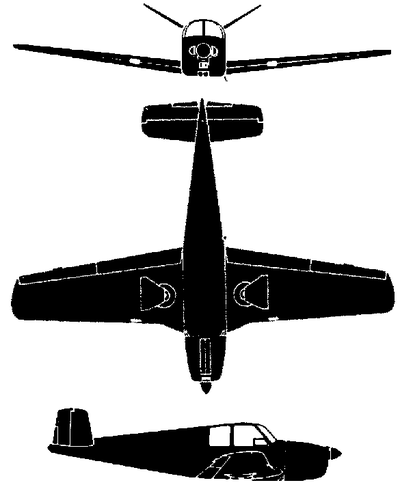Four Killed in VFR to IFR Mishap
The National Transportation Safety Board has made public its final report pertaining to a 04 December 2021 accident in which four lives were lost when a Beech V35 Bonanza, registration N7933M, went down in night IMC conditions shortly after departing California’s Visalia Municipal Airport (VIS).

The aircraft was piloted by a 78-year-old, instrument-rated Private Pilot who’d logged 2,428-hours total-time and 2,302-hours PIC time. A review of the pilot’s logbook indicated he had completed an instrument proficiency check on 24 March 2021—eight-months and ten-days prior to the accident. In the 12 months preceding the mishap, the pilot had accumulated approximately four-hours of simulated instrument flight, 0.4 hours of actual instrument flight, and one hour of night flight.
Also aboard the aircraft were three non-pilot-rated passengers: a 58-year-old male and two females aged 46 and 48-years.
At 18:30 PST on the evening of the accident, the VIS automated weather observation station reported wind from 280° at 5-knots, visibility of 2 ½ miles, mist, broken ceiling at three-hundred-feet Above Ground Level (AGL), temperature 8°C and dew point temperature 8°C, altimeter 30.24 inches-of-mercury.
An AIRMET SIERRA advisory for Instrument Flight Rules (IFR) conditions was issued at 12:45 PST and was valid at the time of the accident. The advisory called for ceilings below one-thousand-feet and visibility below three-statute-miles in mist and fog.
The flight was neither in contact with nor operating under the control of ATC.
According to the NTSB’s 26 April 2023 report, the aircraft, a 1966-vintage V35 Bonanza operated under Part 91 of the Federal Aviation Regulations, departed Visalia Municipal Airport (VIS) Runway 30 at 18:37 PST, climbing almost immediately into Instrument Meteorological Conditions (IMC).
Automatic dependent surveillance-broadcast (ADS-B) flight-track information indicated the pilot climbed the airplane to 495-feet MSL, about two-hundred-feet AGL, before initiating a left turn. The airplane reached an altitude of 620-feet MSL before beginning a descent—all the while turning left.
The airplane impacted flat, open terrain approximately one-mile southwest of the departure end of VIS Runway 30. ADS-B data ended at an altitude of 395-feet, approximately 660-feet northwest of the accident site.
The Bonanza’s wreckage was fragmented and distributed in a manner consistent with a high-energy impact with terrain. All major structural components of the aircraft were recovered at the accident site. Examination of the V35’s airframe and engine revealed no evidence of preexisting anomalies by which normal operation would have been precluded.
A witness residing near VIS reported hearing an airplane flying “very low,” followed by the sound of an impact with terrain. The witness stated the aircraft’s engine noise was constant, after the fashion of normal function.
Review of meteorological data at the time of the accident indicated restricted visibility due to mist, with ceilings near three-hundred-feet AGL and tops of a first layer near two-thousand-feet MSL.
The pilot obtained a weather briefing prior to departure.

The night IMC conditions prevailing at the time of the accident were conducive to spatial disorientation and would have made control of the airplane by visual references difficult during the transitional phase of flight immediately following takeoff and initial climb. The left turn initiated at low altitude, the pilot’s failure to maintain the climb, the tightening, descending turn, and the subsequent high-energy impact are all consistent with the known effects of spatial disorientation. Ergo, NTSB investigators concluded it is likely the pilot was experiencing the effects of spatial disorientation in the seconds prior to impact.
Post-accident toxicology testing revealed varying levels of ethanol in the pilot’s liver, kidney, and muscle tissue; a second lab reported no ethanol in his muscle tissue. The ethanol concentration found in the deceased pilot’s liver tissue was higher than the detected ethanol concentrations in his kidney and muscle tissue. Isopropanol was also detected in liver tissue. Given the differing ethanol tissue concentrations, the state in which the body was recovered, and the presence of isopropanol in hepatic tissue, it is likely the identified ethanol derived of sources other than ingestion and did not contribute to the accident.
The National Transportation Safety Board determined the probable cause of the accident to be the pilot’s loss of control due to spatial disorientation. The accident was contributed to by the pilot’s decision to depart into night instrument meteorological conditions.
 ANN's Daily Aero-Term (04.25.24): Airport Rotating Beacon
ANN's Daily Aero-Term (04.25.24): Airport Rotating Beacon ANN's Daily Aero-Linx (04.25.24)
ANN's Daily Aero-Linx (04.25.24) Klyde Morris (04.22.24)
Klyde Morris (04.22.24) Airborne 04.24.24: INTEGRAL E, Elixir USA, M700 RVSM
Airborne 04.24.24: INTEGRAL E, Elixir USA, M700 RVSM Airborne 04.22.24: Rotor X Worsens, Airport Fees 4 FNB?, USMC Drone Pilot
Airborne 04.22.24: Rotor X Worsens, Airport Fees 4 FNB?, USMC Drone Pilot




